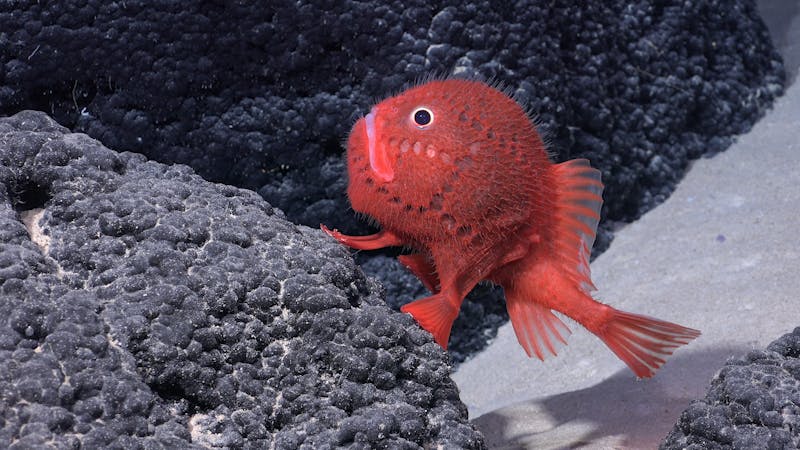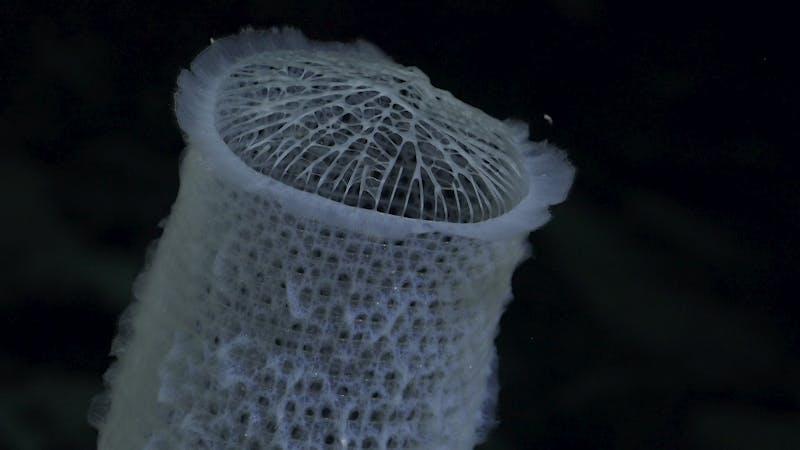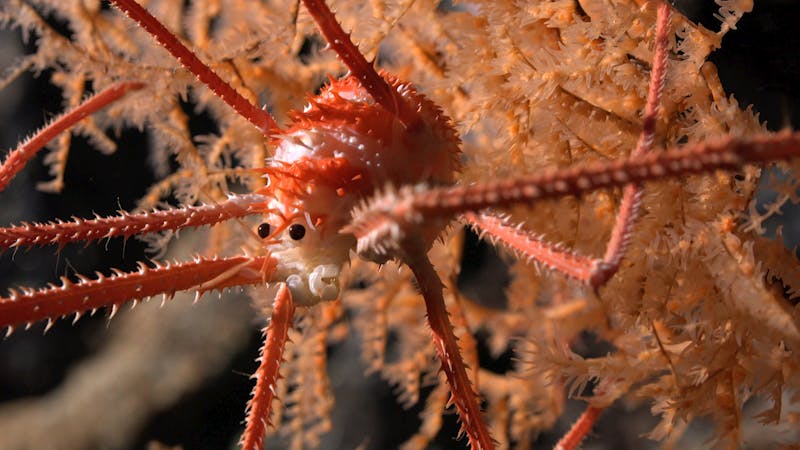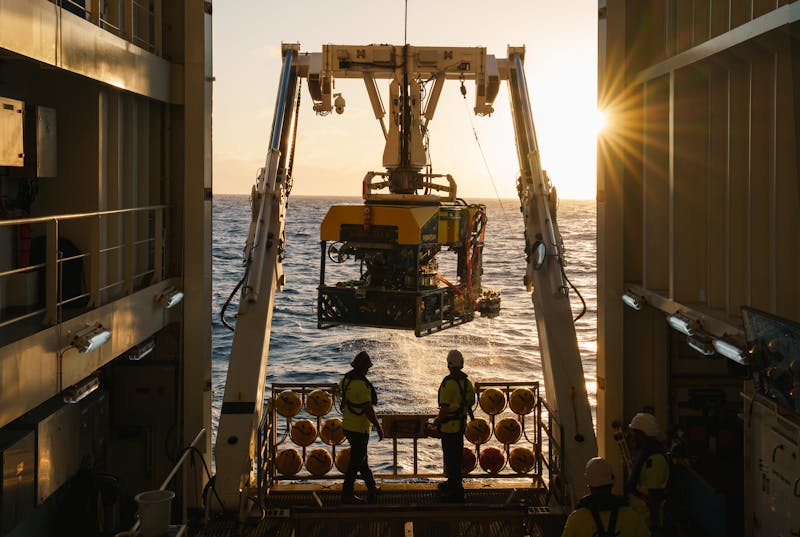A recent deep-sea expedition off the coasts of Chile and Peru is revealing the secrets of a vast underwater mountain system — and making the strongest case yet for greater protections there.
Using underwater robots capable of descending more than 4,500 meters (14,760 feet), researchers say they may have discovered more than 100 never-before-seen species living on the Salas y Gómez and Nazca ridges, which stretch across the southeastern Pacific.
“These findings just blew us away,” said Erin Easton, the expedition’s lead scientist. “It was almost baffling to discover so many new creatures. In some areas, we were finding species we’d never encountered before every few meters.”
The creatures include cactus urchins — of which there is currently only one known species — squat lobsters with spiky shells and beady eyes, ancient corals likely dating back thousands of years, translucent “glass” squids and potentially 30 new species of sea sponges, including some unusually colorful ones. The researchers even witnessed a bright red fish using its fins like hands to move across the sea floor. Now, they must analyze the species’ genes before confirming they are in fact new to science.
 One of the new species spotted is this fish that uses its fins like hands to "walk" on the sea floor. © Schmidt Ocean Institute
One of the new species spotted is this fish that uses its fins like hands to "walk" on the sea floor. © Schmidt Ocean Institute
The monthlong expedition, led by the Schmidt Ocean Institute — with funding from Conservation International, the Blue Nature Alliance and Coral Reefs of the High Seas Coalition — explored 10 seamounts, some for the first time.
“The Salas y Gómez and Nazca ridges are some of the most unique and biodiverse ocean areas on the planet — down to the individual seamounts,” Easton said. “Each underwater mountain is like its own ecosystem, hosting distinct creatures that don’t live anywhere else on the planet.”
 The expedition potentially uncovered 30 new sea sponge species. © Schmidt Ocean Institute
The expedition potentially uncovered 30 new sea sponge species. © Schmidt Ocean Institute
That’s thanks to rotating currents, which carry cold waters from the south and warm waters from the north — as well as high levels of nutrients. These conditions have led to species that are highly specialized to thrive on the seamounts. Scientists are just beginning to unravel their mysteries, including why species living in relative proximity on nearby ridges are so distinct.
“There is so much we still don’t know about these underwater biodiversity havens,” Easton said. “But one thing we do know is that what happens on these seamounts is directly connected to the larger ocean ecosystem.”
For example, migratory species like tuna, sharks and sea turtles rely on seamount habitats, like coral reefs, to lay their eggs and forage for (or avoid becoming) food.
“On this expedition, we saw eggs on almost every species of coral across numerous seamounts,” she said. “That means some organism, likely a fish, is relying on these corals to reproduce. What would happen if those corals were to disappear — what cascading effect could that set off?”
Over the course of a month, scientists explored 52,777 square kilometers — an area the size of Costa Rica. © Schmidt Ocean Institute
Scientists argue that the Salas y Gómez and Nazca ridges’ exceptional biodiversity offers a unique opportunity for conservation. While Chile and Peru have established marine protected areas in this region, those efforts do not protect most of the ridges.
The underwater mountains run about 3,000 kilometers (1,800 miles) — longer than the Himalayas. And more than 70 percent of them exist outside protected waters, in an area beyond the jurisdiction of any individual country known as the “high seas.” Their remoteness has so far protected the ridges from many human impacts, however threats from deep-sea mining, pollution and overfishing are looming.
Ocean advocates hope a high seas treaty approved last year by the United Nations will help create new marine protected areas to shield international waters from increasing threats. And they argue the Salas y Gómez and Nazca ridges should be one of the first areas considered for protection because they support some of the highest known concentrations of endemic species in the marine environment.
 Many species living on the seamounts, like this squat lobster, are found nowhere else on Earth. © Schmidt Ocean Institute
Many species living on the seamounts, like this squat lobster, are found nowhere else on Earth. © Schmidt Ocean Institute
However, experts say it could be years before the treaty is ratified and goes into effect. In the meantime, they hope the findings from this, and a second expedition that embarked on February 23, will help bolster the call for high seas protections, while also spurring more immediate conservation actions, such as a fishing closure in the high seas area of the Salas y Gómez and Nazca ridges.
“The information we obtain will provide the scientific basis for continued management of the region’s existing marine protected areas and lay the foundation for the creation of new protected areas on the high seas portion,” Easton said.
“We can’t approach threats to the high seas as independent countries, our actions in one place have profound consequences elsewhere,” she added. “We must come together as a global community.”
 Underwater robots captured images, videos and samples from the seamounts. © Schmidt Ocean Institute
Underwater robots captured images, videos and samples from the seamounts. © Schmidt Ocean Institute
Further reading: